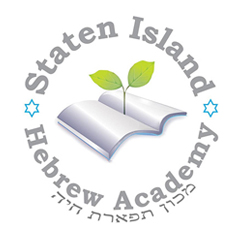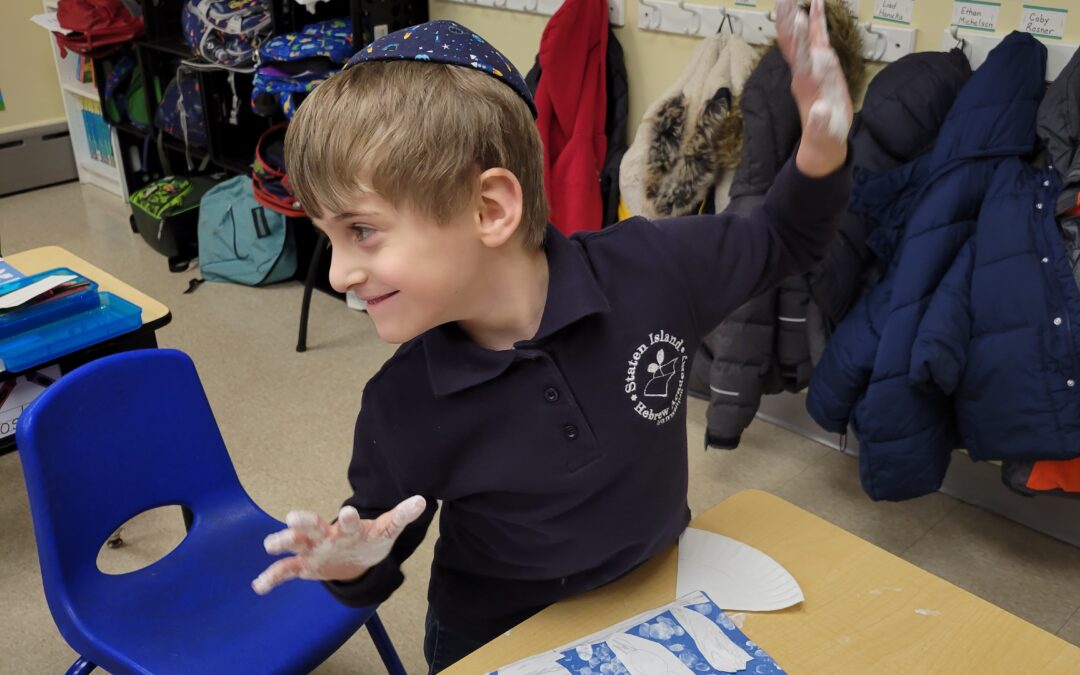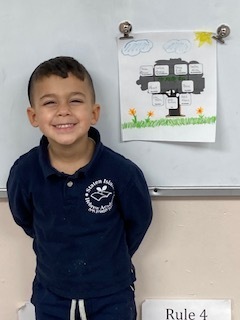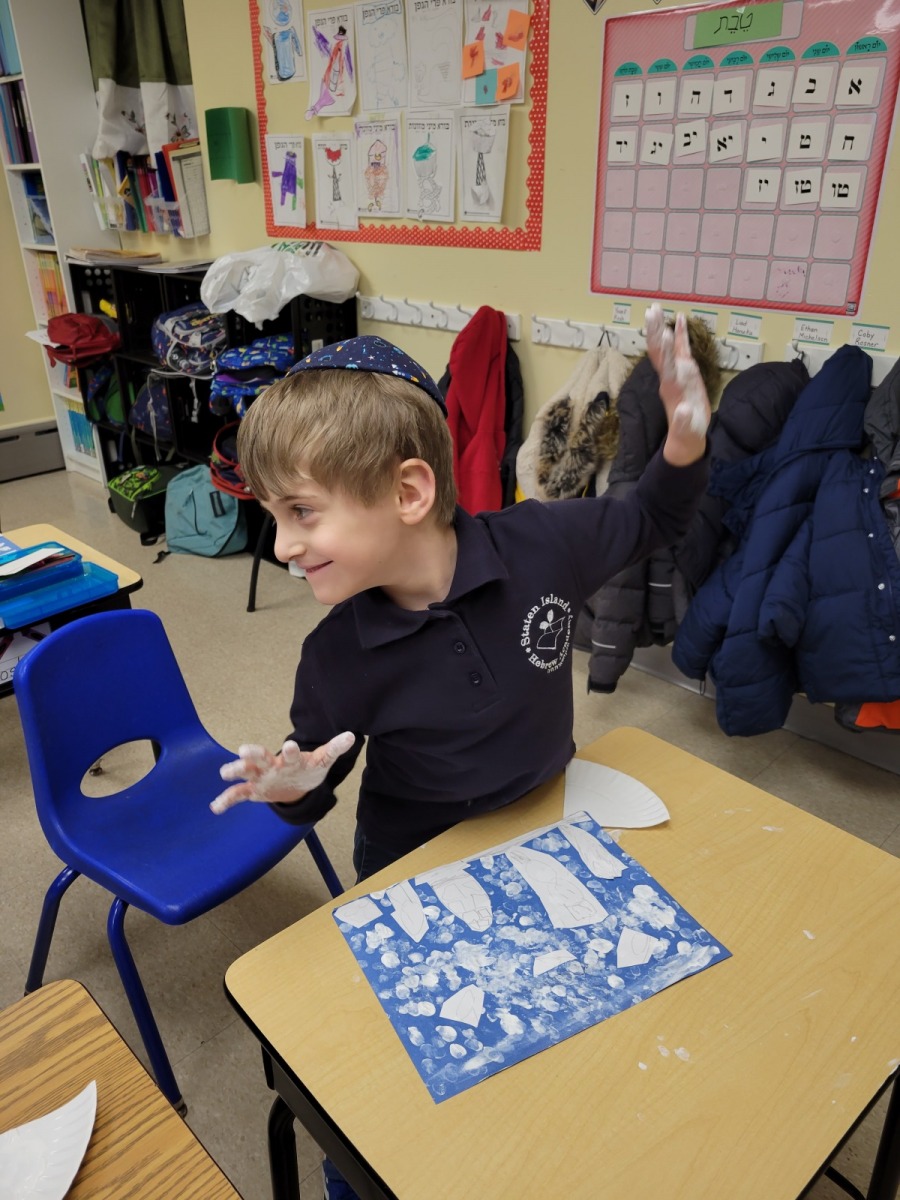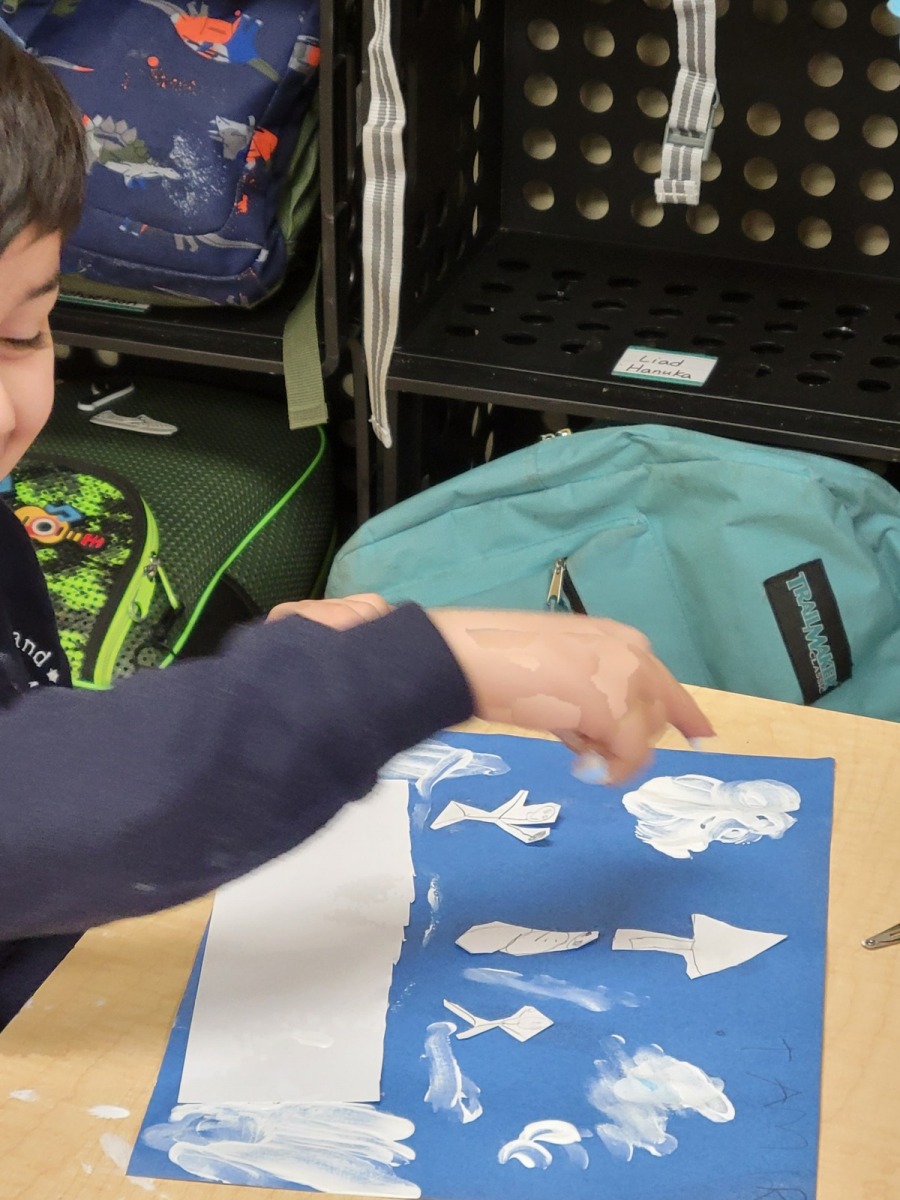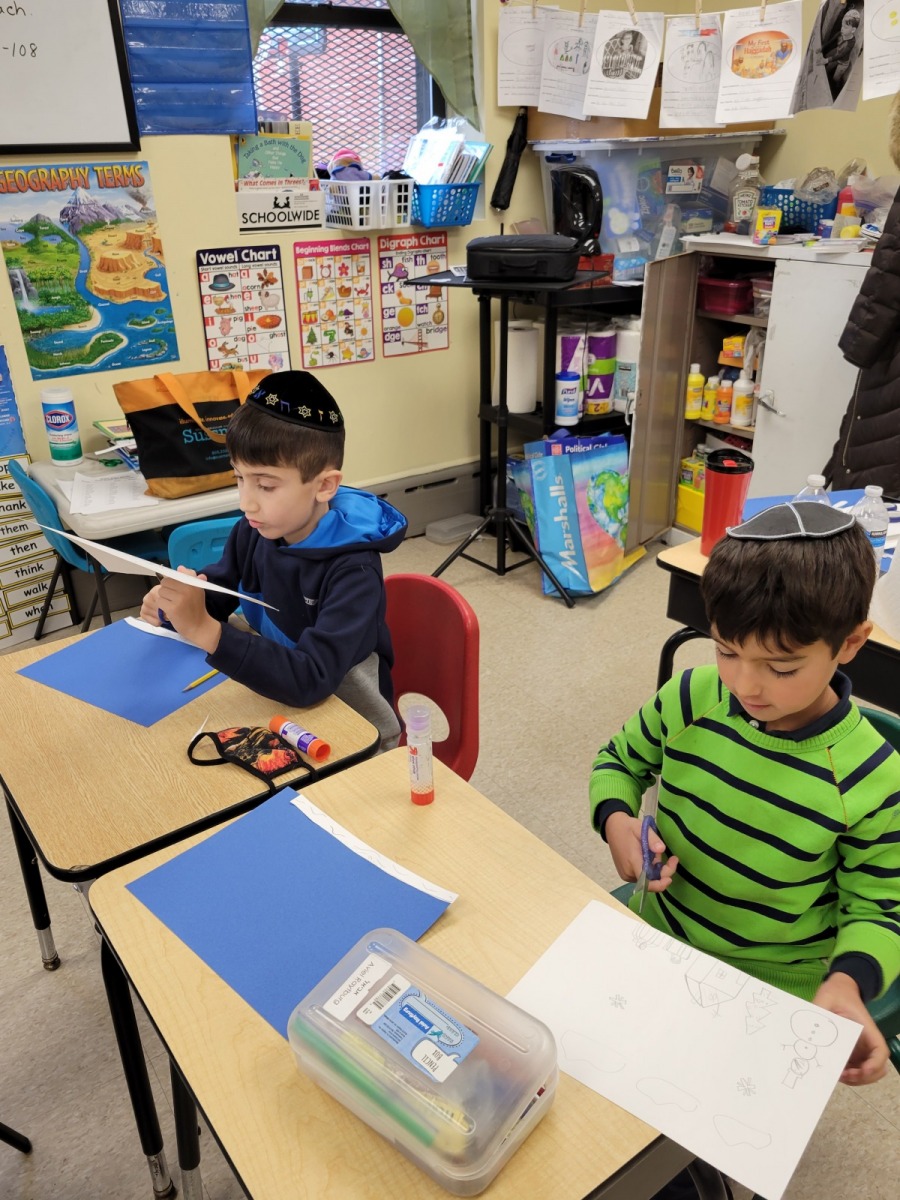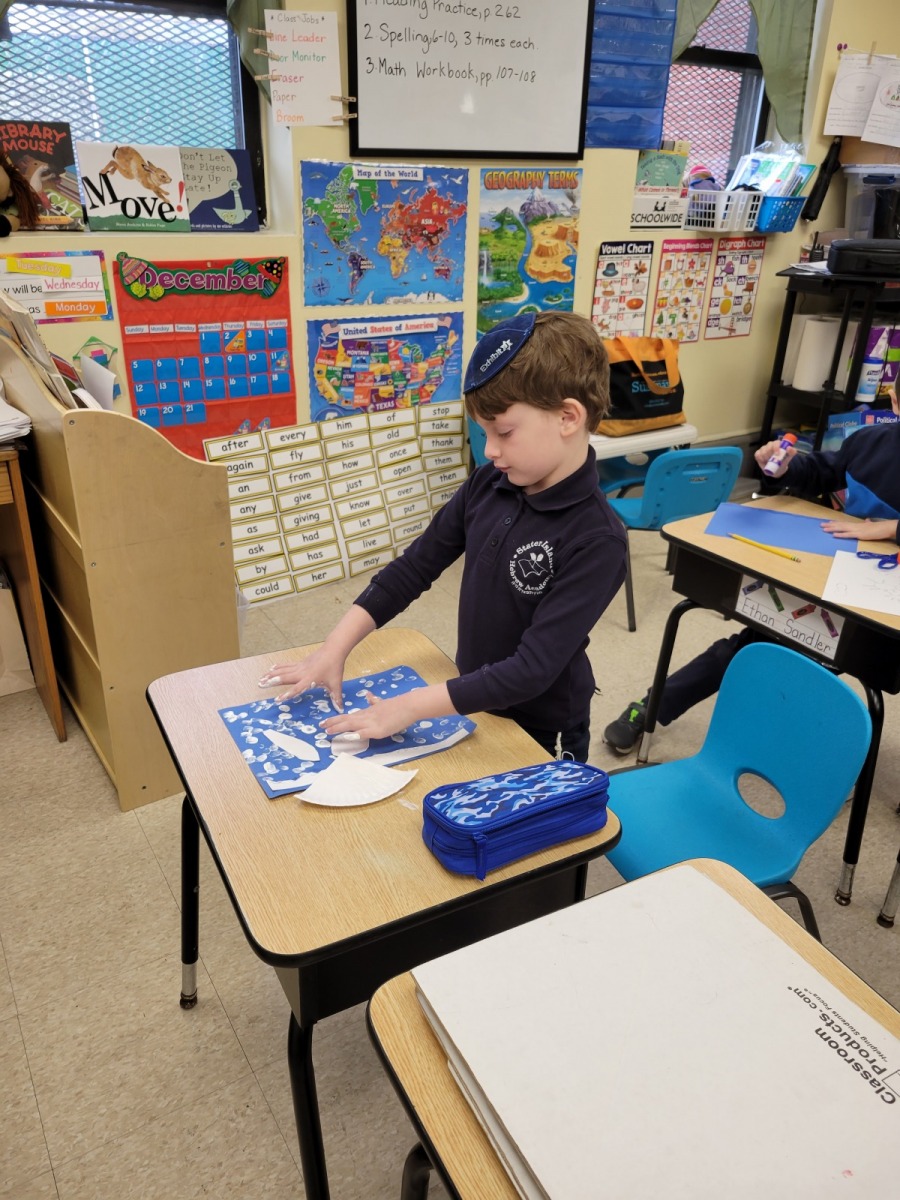Dvar Torah
Parshas Shemos
Candle lighting: 4:16
This week’s Parsha begins by telling us the names of each individual who descended to Egypt with Yaakov. Each name is emphasized. The Torah does not contain even one extra letter, yet the Torah enumerates each name. Later on, we see that the Jewish people were praised for keeping their Jewish names and not using Egyptian names. This action was a great merit towards the redemption.
The Torah is teaching us an important lesson.
Your name is not just a means of identifying a particular individual but actually defines you.
When a person uses their Jewish name, they are announcing, “I am a Jew, I consider myself a Jew, I am proud of my identity as a Jew!” They are telling the world that they are proud of who they are.
Each and every Jewish name is unique and has a special meaning. Jewish tradition teaches that parents are given divine inspiration when naming a child. Every child gets a name that is perfectly suited for them.
You have a special Jewish name. Use it proudly!
Mrs. Rosskamm
Judiac Studies Coordinator
Special Announcement
Dear parents.
Thank G-d, we had a wonderful week at Siha.
The students are being very welcoming to each other and filling out many welcoming contest cards.
Each student who fills out card(s) receives a prize.
There are also raffle winners chosen for each class.
Keep them coming! We’re very proud
Shabbat Shalom!
Best regards,
Miss Dershowitz
Mrs Ferber
Judaics
Kindergarten and First Grade
We baruch Hashem had another great week in Judaics – whether in class or on Zoom!
In kriah, the kindergarteners learned about the letter “cookie kaf”! They had a great time using a cookie to make its dot, playing hokey pokey with the letters, dancing to different letters, and playing tic-tac-toe on Zoom! The first grade is getting really good at reading words with kamatz, patach, tzeirei, and segol! They had a great time popping all the segol balloons on Zoom!
In kesiva, the first grade learned how to make a “hey” which is like a big reish with a little reish inside.
In yahadus, we learned a new bracha (blessing) which is said on wine and grape juice – hagafen. We learned how wine is made and made a cute hagafen man so that we can always remember the correct bracha to say.
In parsha, we learned about the mean Egyptian king Pharaoh who made the Jews into slaves and how Hashem promised to punish the Egyptians and free the Jews through His messenger Moshe.
We also learned about the important mitzvah of “kibbud av va’eim” (that starts with a kaf!) – honoring one’s parents. We know how our parents do so much for us and how we must always listen to them right away and give them our utmost respect.
I’m looking forward to seeing everyone again in school!
Morah Chavi
Second Grade
We had an interesting week as we transitioned onto zoom on Wednesday. We are learning about the Parsha of Shimot which is the 2nd book of the Torah. This week in Shuls all over the world we listen to the Torah Reading of Parshat Shimot which describes the hard labor the Jews were forced to do as slaves in Egypt and the birth of Moshe (Moses) who eventually
under the directive of Hashem (G-d)leads the Jews out of Mitzrayim (Egypt). We learn that if we want something we have to put in the effort and try our hardest. Batya the daughter of King Phaaroh wanted to save the Jewish baby she saw floating in the Nile River but her arm was too short and she couldn’t reach it until Hashem performed a miracle whereby her arm stretched until she was able to retrieve the basket with the baby. We began our unit on Brochot and learned the Brochot of Hamotzei and Mizonot.
Third Grade
This week in third grade was definitely unusual.
We started off with reviewing the Rosh Millah which they all know beautifully.
We continued to review Dikduk and that was done beautifully as well.
In Pitgam we enjoyed a lesson thanks to Mira Elkaiev about how we should always give a person the benefit of the doubt since we don’t know the other half of the story. Continuing the week on Zoom 3rd grade learned maturely and beautifully.
We practiced Kriah, Dikduk, colors in Ivrit and Parsha.
Hope to see you all next week healthy and well.
Shabbat Shalom!
Morah Ferber
Fourth Grade
Dear Parents,
This week was very accomplishing.
We spent much time talking about the Beracha of Birchat Hatorah. We spoke
about how special it is to belong to the Jewish nation. We said how Torah has to
be sweet and very enjoyable for us.
In our Yahadus class we spoke about the Jewish months of the year. It was loads
of fun figuring what happens in each month. Some students even knew in which
Hebrew month their Birthday falls out.
Mia Factor and Matthew Kipnis did very nicely in their classwork in Yahadus.
Yes, we worked on our Hebrew words and Shoroshim – root words.
We had a super quiz of the Hebrew words on our Bulletin Board.
For Parsha class we saw exciting slides all about the Parsha, of how Moshe
Rabienu was put in a basket and put into the river. Bisya the daughter of Pharoh
took him out and took care of him. Leah Yakobzon is the winner of the Pasha
notebook.
Maayan Malka is awarded the Helper of the week.
A big Thank you to Mrs. Amos for getting the Artscroll Parsha Books that we are
very excited to use.
Have a Shabbat Shalom,
Stay healty and well.
Rabbi B.
5th and 6th Boys
We began the week discussing a Mishna regarding the law of a person falling on a lost object vs a person making an acquisition on a lost object.
We ended the week focussing on a Mishna that teaches the law of finding a live object, like a lame deer or young pigeons that could not fly vs a healthy deer or birds that could fly, and having our yard acquire them for us. We learned that our yard/property can acquire an object for us in certain instances i.e. when it is in our power to confine the animal.
We learned about the Parasha.
We Began learning the laws of Shmone esre.
I really must say that I am very proud of my 5th and 6th grade troopers who have been very motivated to do well and hand [email/google docs] their papers to me.
Looking forward to seeing you all in person asap
Shabbat Shalom
7th and 8th Girls
What a week!
Beautiful davening.
On Tuesday, when only a few brassbound students were in class, we took the time to slowly recite Shmone esre [most of it] while turn taking reading from our smart board!
A lot of learning. We began a new Perek in Yehoshua about the Jews conquering Ha’ay and Ay and followed up in our beautiful workbook.
We delved deeper into Parashat B’ha’aloscha, which we concretized with Rabbi Kuritsky’s customized sheet. We began a new chapter discussing the laws of Shmone Esre.
Of course we studied the weekly Parasha. Girls are excited about our upcoming weekly Parasha quiz.
I really must commend the wonderful girls for their commitment to their studies which was shown by their diligence on zoom and by turning in work papers.
Naturally, we learned about Parashat Shmos. We read about the Parasha, from an outline and filled in work sheets .
All in all in class and on zoom we had a very productive week.
7th and 8th Boys
Dear Parents,
This week we covered many topics
In Biur Tefilla class we spoke about the Beracha of Shemona Esreh of Teka
B’shofar. We ask Hashem to Blow the Great Shofar and bring us together. We
spoke about being together with one another is very important. In Davening Oren
Dery was amazing. We are very proud of him.
In Gemara we spoke about an amazing Gemara that askes a question that how
could “Umatza” mean 2 different things. The Gemara answers that each place is
the topic of that Pasuk. In Gemara class Jeffrey Shutman was awarded Learner of
the week.
In Halacha we started learning about the great Mitzvah of Honoring Parents. We
saw in the Halacha that it is as if you are Honoring Hashem.
Doron Glickman is the awarded the Student of the week.
Topics from the Parsha:
The בני ישראל became a very big nation very quickly, as they were having 6
babies at a time.
פרעה saw the many Yidden and became nervous that they might fight and take
him over, or leave מצרים. So he “forgot” all the good that יוסף had done to help
him, and started to plan mean ways to stop the Yidden from growing any more.
פרעה tricked the Yidden into becoming his slaves. שבט לוי didn’t have to work
since they never went from the beginning.
פרעה had a new plan: he told שפרה and פועה to secretly kill the baby boys as
soon as they were born. Of course they didn’t listen, and they got a special
reward from Hashem.
פרעה tried another idea. To openly kill all the newborn baby boys by throwing
them into the Nile River. Why did פרעה say to throw them into the water and
not kill them a different way?
משה רבינו was born to his father עמרם, and his mother יוכבד. He had a sister
מרים, and brother אהרן.
משה was hidden in his house for 3 months. When his parents became afraid
that he would be found, they made a basket for him and “hid” him in the Nile
River.
מרים stood on the side to watch and see what would happen to משה. בתיה the
daughter of פרעה came down to the river and saw the basket. She stretched
out her hand to take it, and decided to bring the baby home.
מרים told בּתי’ that she knows someone who can feed the baby and quickly
called her mother to come.
משה got his name from בתיה, he was raised in the palace of פרעה.
When משה got older he looked for ways to help the Yidden (רחמנות). He saved
a Yid who was getting beaten by a מצרי, by killing him using Hashem’s special
Name.
The next day, he saw 2 Yidden named דתן and אבירם fighting. When he
stopped them, they got upset at him, and told פרעה that he killed a מצרי. After
Hashem saved him from פרעה, משה escaped to מדין.
While משה was waiting by a well (like יעקב אבינו did), he met the 7 daughters of
יתרו. He helped them get water from the well (רחמנות). He later married צפורה,
the daughter of יתרו. He had 2 sons named גרשום and אליעזר.
Hashem spoke to משהfrom inside of a burning bush, and told him that the time
for the Yidden to leave מצרים had come. The time had come for the Yidden to
receive the Torah and go to ארץ ישראל, with משה רבינו as their leader.
משה together with אהרן went to פרעה and told him that Hashem wants the
Yidden to go free. As we know, פרעה didn’t listen and he made the Yidden work
even harder.
Have a Good Shabbos!
Rabbi Berelowitz
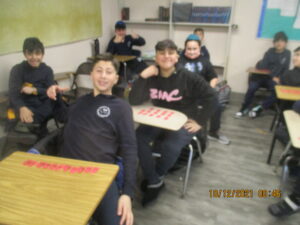
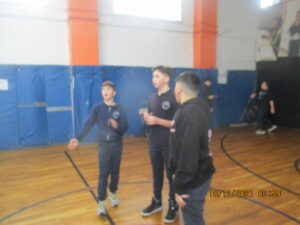
Elementary School
Kindergarten
This week kindergarten really impressed me with their ability to continue to do amazing work even when they are on zoom! I am very proud of them! This week they made a TH puppet and practiced reading and spelling TH words. They also learned the welded sound that the letters INK make. They learned how to identify the beginning, middle, and end of a story in preparation to begin writing their own personal narratives once we are back in the classroom. In math they practiced using non standard tools to measure the length and the width of objects. They reviewed the math facts they have learned so far, learned a couple of new facts, and practiced adding and subtracting 1 from a number using mental math. In science they learned all about what makes day and night and what we see in the daytime and in the nighttime. They also learned how to describe the physical properties of objects. The children picked an object in their house and if they described its physical properties well enough we were able to guess what the object was. In social studies some of the class got to share their family tree projects. They were very excited to share their family trees with the class and they did a wonderful job on their presentations.
First Grade
This week the first graders read the fable of the Grasshopper and the Ant. We learned that Ant was prepared because she planned ahead while Grasshopper played all day. Students also practiced making inferences about characters.
In Social Studies we learned about how communication has changed over time. Students were surprised to see how people communicate in many different ways such as talking, sign language, and text messages. We even learned about how the Pony Express brought messages across the country by horseback. In Art class students created snow pictures. They also wrote beautiful sensory poems recalling all of the wonderful things about winter.
Second Grade
2nd grade dove into remote learning this week. We learned about singular and plural possessive nouns in grammar. We also continued reading Charlotte’s Web. In math, we are wrapping up our unit on measurement. In social studies we are learning about symbols that represent America. We learned about landmarks, monuments, and memorials too! In science, students learned the process of the Water Cycle and the cause of it.
Third Grade
This week Grade 3 read an article about a race in a small Alaskan town called Nome. This was no ordinary race, but one to save children from an illness that threatened their lives. We read about the treacherous journey Bolto along with his dog sled team and musher Gunner Kaasen took to bring the medicine to their town. After reading about the true tale of 1925, we also watched the film version to compare and contrast the story. We noticed many differences, but were also able to recognize a few similarities. During our math lessons, students worked on developing their problems solving skills. We worked on solving two step problems and creating bar graphs to represent the information. In Social Studies, students reviewed the effect the different landforms have on people’s lives. We also examined how climate and weather differ, as well as their effect on the way we live.
Miss Sasha
In science, students learned and identified what makes up an ecosystem; described how living things meet their needs in habitat; identified habitats in a pond and forest community.
Fourth Grade
This week in math we reviewed our unit on fractions and are ready to take the test next week.
In ELA we continued to work on persuasive writing. Use present and past tense linking verbs, identified and use irregular past tense verbs, and identify and use contractions with NOT.
In Social Studies we reviewed for our chapter 4 test Living in the East. Test will be on Wednesday.
Kids did amazing on zoom. I’m very proud of all of them!
In science, students learned and observed the response of a plant to a stimulus; understood how organisms detect and respond to stimuli; understand how animals learn; distinguish learned and inherited behavior.
Fifth Grade
5A
In ELA students learned about proper and common nouns. They finished their novel, Maniac Magee and began their essay. I am happy to see that the students in 5A are rising to the challenge of this essay.
In science, students recognized photosynthesis as an adaptive characteristic of plants that improves their ability to survive in an ecosystem; learned and recognized that tropisms are adaptive characteristics of plants that improve their ability to survive in an ecosystem; compare the adaptive characteristics of plants that result in their ability to reproduce.
5B
In ELA, students learned about proper and common nouns. They continued to read and discuss their novel. I am happy to say that they will be finishing their novel next week and will begin their final writing assignment for it.
In science, students recognized photosynthesis as an adaptive characteristic of plants that improves their ability to survive in an ecosystem; learned and recognized that tropisms are adaptive characteristics of plants that improve their ability to survive in an ecosystem; compare the adaptive characteristics of plants that result in their ability to reproduce.
Middle School
Middle School ELA and Social Studies
6th Grade
In ELA students practiced their new vocabulary. They finished their novel study of Holes and began their essays on literary conflict. I am happy to say that the students have made excellent progress in their essays. Next week is a new novel!
In SS the 6th grade learned all about the Mauryan and Gupta empires of Ancient India. They learned of some of the advancements these civilizations made. They were particularly interested in the number system.
7th Grade
In ELA students continued preparing for the state test by writing short responses. They continued to read their class novel. Lastly, they practiced their new sets of vocabulary words. In SS students continued their unit on the French and Indian War.
8th Grade
In ELA students practiced their new vocabulary. They continued their novel study of Animal Farm, by comparing Napoleon and Snowball to each other. In SS students continued their unit on the end of WWII.
Middle School Math
5th finished applying multiplication and division of fractions to challenging problems.
6th finished applying all operations with fractions and decimals to challenging problems.
7th learned how to find the theoretical and experimental probability of simple and compound events.
8th learned how to solve absolute value equations and how to sketch their graphs given the parent function.
Middle School Science
Students are discovering what it means to be alive! Students will be completing a Scientific Explanation answering the essential question “What does an organism need to be deemed alive?” They are investigating various articles and will watch a few videos to begin their investigation, so they can determine a position and make a claim. Once their investigation is complete, students will make their claim and support it with evidence from the sources they used to complete their investigation.
Students learned and understood that the viscosity of the lava that erupts from a volcano can lead to the creation of different volcanic landforms; Students reviewed Unit 6 “Volcanoes”.
6th graders completed a research paper about the most recent Volcanoes on Earth.
